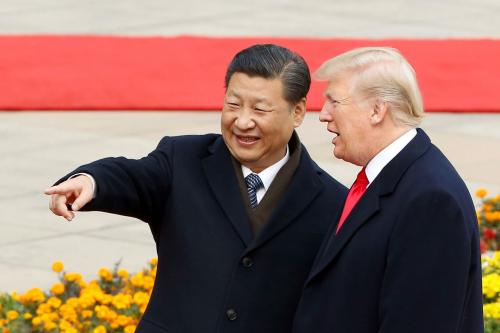Free trade brings costs as well as benefits. This is an uncomfortable fact, but one that policymakers are having to take more seriously following the 2016 election and the triumph of trade-sceptic Donald Trump. The broad elite consensus in favor of removing trade barriers is under attack around the globe, prompting fears of a new era of protectionism.
A trio of economists, David Autor, David Dorn, and Gordon Hanson, have produced a series of path-breaking papers on the social costs—sometimes obvious, sometimes hidden—of trade with China. Their latest work shows that trade exposure to China has not only had some negative implications for employment, but is in part responsible for the decline of marriage and the rise of single parenthood.
There have also been concerns over the methodology adopted by the authors, including some raised by our former colleague and contributor to this blog, Jonathan Rothwell. (For those who want to get into the relative merits of stacked models, dive right in.)
Keeping things in perspective on trade and marriage
But leaving this technical debate aside, there is a danger that the results from Autor et al. are blown out of proportion. One headline from The Washington Post reads, “Trade with China might have ruined your love life.”
The research does indeed suggest that declining labor market success has made men in trade-affected areas less “marriageable.” But the effects are relatively small. As the authors insist, “rising China trade is a contributor to, but not the primary driver of the broader demographic shifts on which we focus.” That is certainly true: their conservative estimate is that the Chinese trade shock reduced marriage rates by roughly one percent, and increased out-of-wedlock childrearing by half a percent. Against the overall trends, these are modest impacts:
Change the economy, or change men?
It is important to confront the true costs of trade, especially in terms of impact on U.S. manufacturing. Supporters of free trade should not pretend it is cost-free; rather, they need to show that curbing free trade would have much greater costs.
When it comes to marriage, it is clear that the impact of trade, as refracted through men’s wage potential and therefore “marriageability,” is pretty small beer. The changes in family structure are the results of tectonic forces in culture, social norms, as well as the economy. And as Isabel Sawhill and Joanna Venator have pointed out, the concept of “marriageability” is in need of clearer definition, since it tends to rely on rather dated ideas of gender roles.
One of the main challenges for men is the need to adapt to the labor market as it is, rather than as it once was. As Georgetown economist Harry Holzer argues, the American middle class is neither dying nor hollowing out, it is simply changing. The fastest employment growth in recent decades has come from traditionally feminine, “pink collar” sectors, which men are still reluctant to enter. Many of these are what we have labeled “HEAL” jobs—health, education, administration, and literacy—which employ growing numbers of Americans, but remain dominated by women.
Careful empirical work shouldn’t be turned into simplistic narratives of national decline. China isn’t killing marriage. Trade isn’t killing marriage. They are at most small elements of a much richer, and more complex story.
The Brookings Institution is committed to quality, independence, and impact.
We are supported by a diverse array of funders. In line with our values and policies, each Brookings publication represents the sole views of its author(s).






Commentary
Are Chinese factories really killing marriage in America?
March 10, 2017